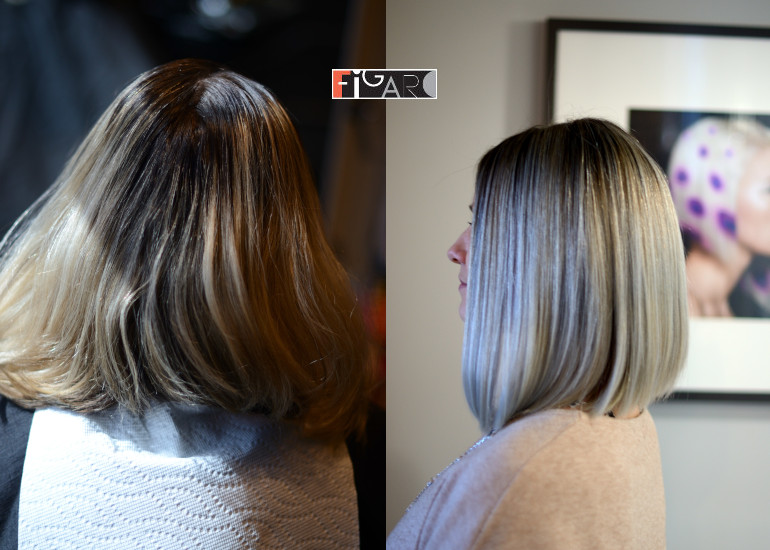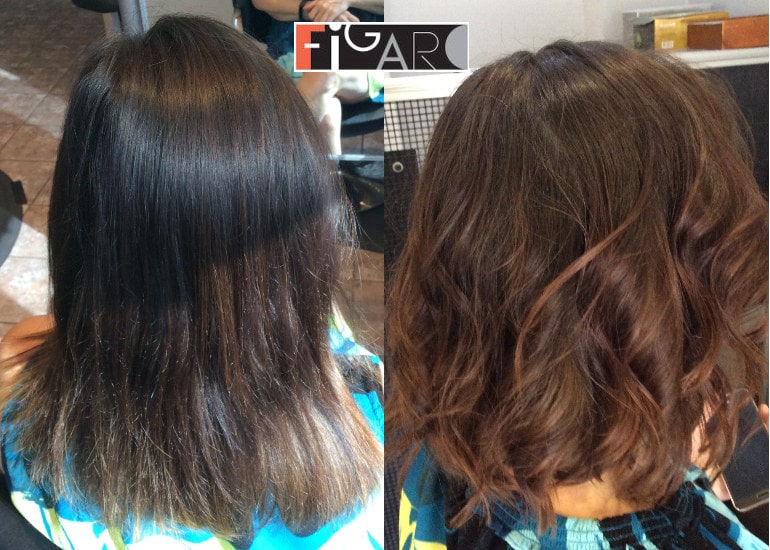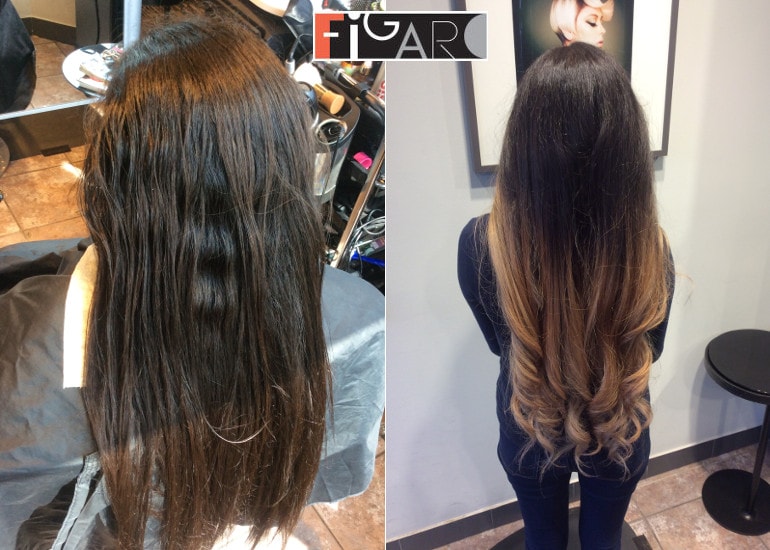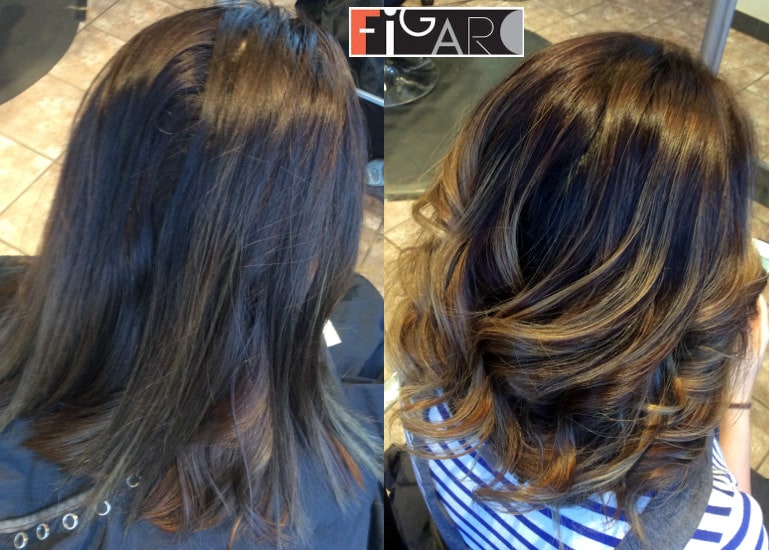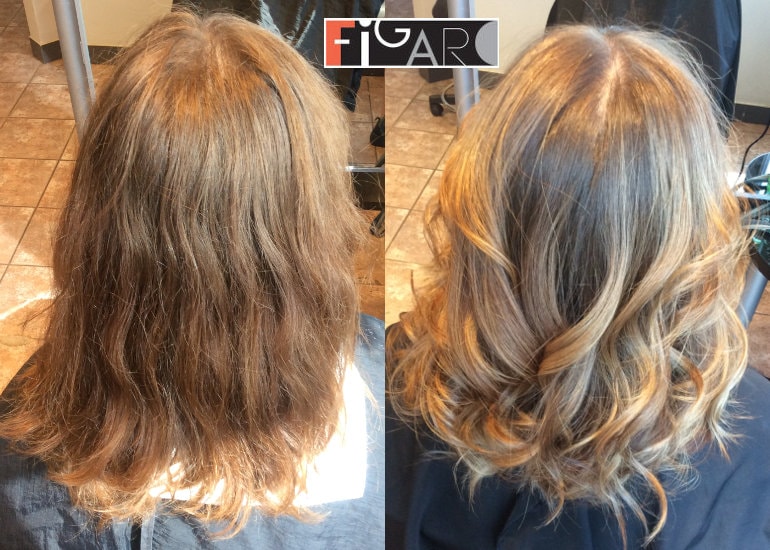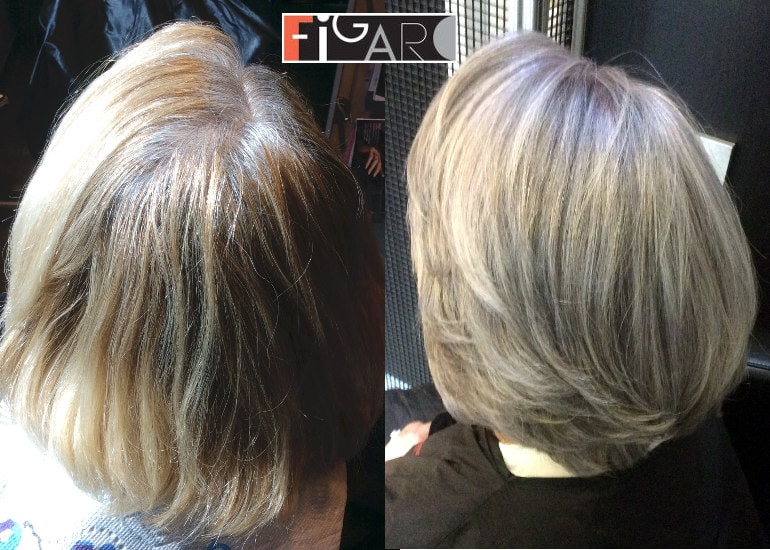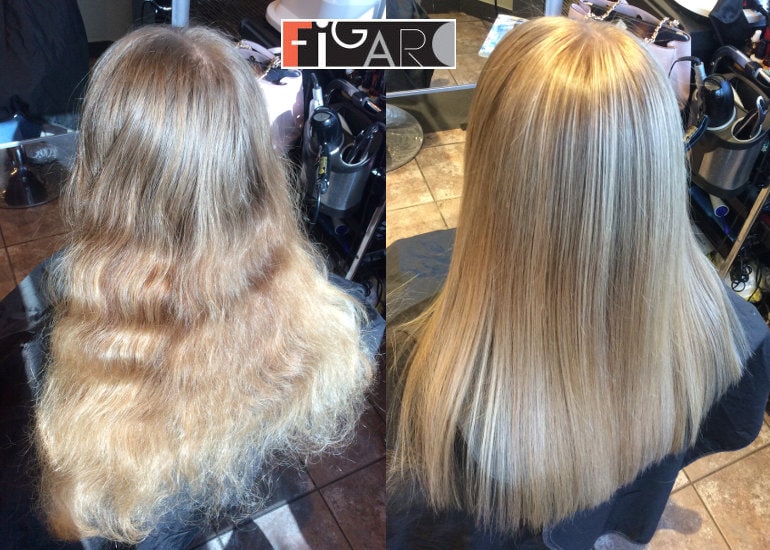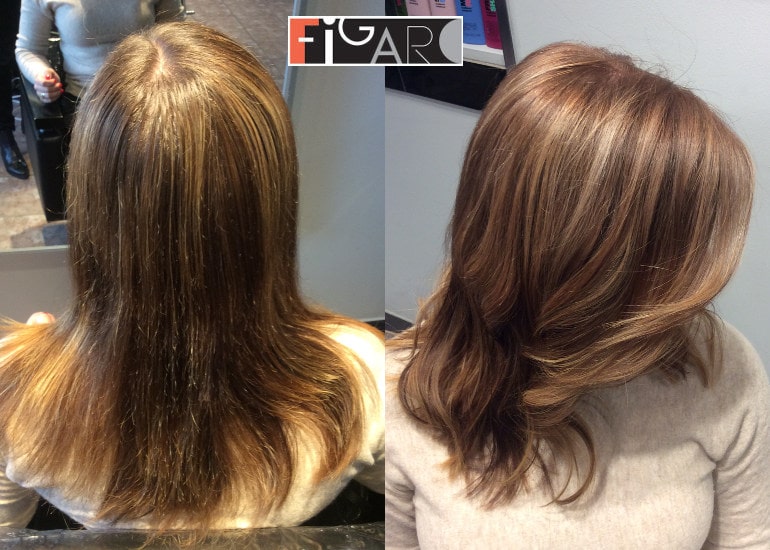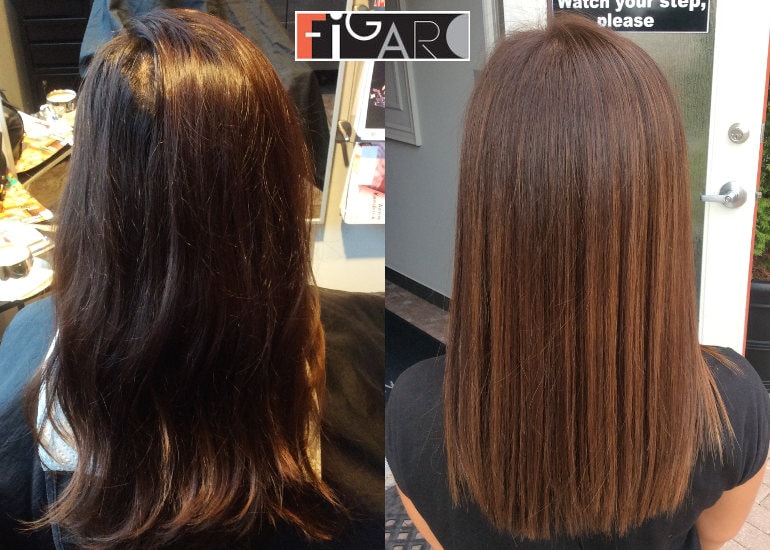You will agree that most of us have tried colouring our hair at least once in our lifetime, dreaming of creating a new image, or making our current appearance more vibrant. However these experiments with hair colouring dont always end successfully. A common reason for this is incorrect selection of hair colour or carrying out incorrect technical colouring methods (watching videos on YouTube and deciding to experiment on your friends). However one of the worst reasons for hair colour failing is by going to insufficiently trained colourists who simply could not fulfill your plans, and did not find the courage to confess their incompetence.
So let's try to figure this out together: where do you start if you decide to experiment and change the colour of your hair? In order for hair colour to look beautiful, it is necessary to take into account some natural features, such as one's natural hair colour, eye colour and skin tone, these together will form what we call your color type appearance. I would say it is only in very rare cases where a woman needs to radically change her appearance in order to make her appearance more radiant. When assessing yourself in front of a mirror, it is always necessary to remember that nature has taken care of a person's appearance since birth and, as a rule, the colour of the hair, the eye and skin tone are in harmony. To change your hair colour, it is enough to choose a subtle hair colour, which differs from your natural by 1-2 tones (in rare cases, by 3 tones) in one direction or the other (lighter or darker).
How to understand what shade will suit you better: darker or lighter?
I always recommend: first of all, to determine the colour of your eyelashes and eyebrows. I do not recommend for the hair colour to be much darker than the eyelashes and eyebrows, otherwise you will have to constantly wear makeup to allow for the combination to work well together. This would result in an unnatural look and visually age you a few years to the age (which is not always desirable). When choosing a tone, cold or warm, it is better to focus on natural tones when adjusting the colour.
So let's try to figure this out together: where do you start if you decide to experiment and change the colour of your hair? In order for hair colour to look beautiful, it is necessary to take into account some natural features, such as one's natural hair colour, eye colour and skin tone, these together will form what we call your color type appearance. I would say it is only in very rare cases where a woman needs to radically change her appearance in order to make her appearance more radiant. When assessing yourself in front of a mirror, it is always necessary to remember that nature has taken care of a person's appearance since birth and, as a rule, the colour of the hair, the eye and skin tone are in harmony. To change your hair colour, it is enough to choose a subtle hair colour, which differs from your natural by 1-2 tones (in rare cases, by 3 tones) in one direction or the other (lighter or darker).
How to understand what shade will suit you better: darker or lighter?
I always recommend: first of all, to determine the colour of your eyelashes and eyebrows. I do not recommend for the hair colour to be much darker than the eyelashes and eyebrows, otherwise you will have to constantly wear makeup to allow for the combination to work well together. This would result in an unnatural look and visually age you a few years to the age (which is not always desirable). When choosing a tone, cold or warm, it is better to focus on natural tones when adjusting the colour.
Radical change of hair colour
Fashion is ever-changing and I often have to meet the wishes of customers, such as: "Yesterday I was a brunette, today I want to be a blondee" or vice versa - this attitude to your own hair is surprisingly thoughtless. Our desire to make a difference in our lives or to surprise others is understandable, but it is not worthwhile to perform such dramatic and very damaging experiments on your hair. You should understand that in order to radically change the colour in many cases the hair is first discoloured (bleached) and only then it is re-coloured. In some cases, this requires double and sometimes triple exposure to aggressive chemicals, which can lead to loss of vitality, split ends and brittle hair. This will result in a long period of hair restoration.
How properly choose hair colour and apply it without damaging your hair?
Rule number one: Never under any circumstances try to do it yourself. It will be too expensive for you - spoiled hair and not exactly the colour that you expected and sometimes, especially when doing it at home, full or partial loss of hair length (they simply fall off). Did you expect that?
Rule number two: Trust professionals.
Rule number two: Trust professionals.
How to find a good hairdresser/colourist?
Do your research on the internet, check the reputation of the master stylist or salon (not 5-10 good reviews, but 100 or more). Check the professional achievements of the colourist, for example, participation in competitions, and accordingly, about the availability of medals and achievements, after all, everyone can participate, but only high-class professionals win. Ask your friends and co-workers. If you find someone you think is a proven professional, call and schedule a consultation (in many respected salons this service is free). And only after you have met with the colourist and have discussed everything, book an appointment for colour correction.
How to choose the right colour for your hair based on your colour type appearance?
Colourists determine the appropriate hair colour for a client based on colour type appearance - in my opinion, this is the most successful method. I would like to note that with the help of properly determining the colour type, it is possible to fully form one's image; determine the most suitable variants of haircuts, hair colour, make-up and even the silhouette and style of clothes, and its colour range. By colour type all people are divided into 4 categories:
"fall", "winter", "spring" and "summer". When determining the colour type, the most attention is given to the shade of the skin, as well as the colour of the eyes.
Colour selection for colour type appearance "Spring"
Spring is a warm colour type, it rarely found in comparison with other types, so in this case the cardinal rule is not to harm or spoil the natural beauty of this "spring" type person.
The skin of people belonging to this category is usually tender and delicate, as if luminous from the inside, they have a warm golden hue, the colour of the eyes is usually blue, there are less likely to have brown eyes or green eyes. As a rule, their natural natural hair colour is light, but it is always has a warm shade: golden-brown, amber or honey. Sharp contrasts and sharp colour transitions are not recommended for this colour type. It is best to choose a hair colour in a gentle golden range: from light honey to a darker sandalwood tone. In the case when a "spring" type women has brown eyes and a darker shade of hair, you can use the mahogany tones. Also, I do not recommend the shades of bright blonde, in this case the face will be lost. But if you're willing to take a chance, I will recommend modern colouring techniques such as
bronde and balayage.
In this case, using a skillful combination of shades, you can achieve soft transitions in the blonde. I do not recommend a very dark tone, remember the colour type "spring" does not tolerate extremes, harmony should be a priority.
Color selection for colour type appearance "Summer"
You will probably be surprised if I say that this colour type belongs to the cooler colour range; we can characterize it with ashy and bluish tones. The skin of "summer" type women can have various shades, but it is always cool toned, as if highlighted in blue.
As a rule, "summer" type women sunbathe well and almost never burns. "Summer" is the most common colour type among Europeans. The eye colour is any combination of grey: grey-green, grey-blue, olive-grey, and hazel is less common. The natural colour of hair can be very diverse for example ashy, light and dark blonde, but the main difference is that there is no yellow or golden hues.
"Summer" type women do not have red and black hair, nor do the have porcelain coloured skin. So, what are the best shades for the "summer" type? Owners of light hair will suited by all shades of wheaten colour, and also colouring in technique
balayage and ombre.
A darker "summer" type is better off choosing shades that resemble a black tulip, dark brown, without yellow tones, with reddish sparks in the light.
Color selection for colour type appearance "Fall"
The "fall" type belongs to a warmer colour pallette, which can be compared to a "spring" type, with one exception: the people of this colour type have a brighter eye, skin and hair colour. As a rule, natural hair has a pronounced copper or honey hue, regardless of whether it is light or dark hair.
The eyes of the "fall" type are bright: green and brown eyes with a yellow tinge being in contrast with the colour of the hair. Hair colour for dark skin "fall" type must be a warm. You can select the hue of strawberry blonde as well as the shades of caramel and honey as a light colour.
For colouring in darker colours shades of red tones, as well as red and chestnut tones, warm chocolate and colder mahogany will suit. All modern colouring techniques are appropriate such as balayage,
ombre, bronde, and of course highlights.
Colour selection for colour type appearance "Winter"
"Winter" colour type refers to a cold colour palette, it is often confused with "summer" and "autumn" color types.
In order not to confuse "summer" and "winter", you must remember that in a "winter" colour type there is no dark skin tones. It is difficult to distinguish two colour types, and only the colour of the skin can distinguish between "winter" colour type and "autumn" colour type.
The thing is that the "winter" colour type is divided into two additional subtypes: contrasting and non-contrasting. The non-contrasting winter can have olive, yellow-green and yellow-brown eyes, as well as brown natural hair. The eyes of the contrasting winter are bright and cold: blue, gray without shades, dark brown, almost black, hair - dark black with a cool blue gleam.
For "winter" colour type use shades of cool chocolate (even if they are at the level of brunette, the main thing is to be cool), rich plum, and cooler shades of eggplant
Bronde modern dyeing technique is suitable well.


